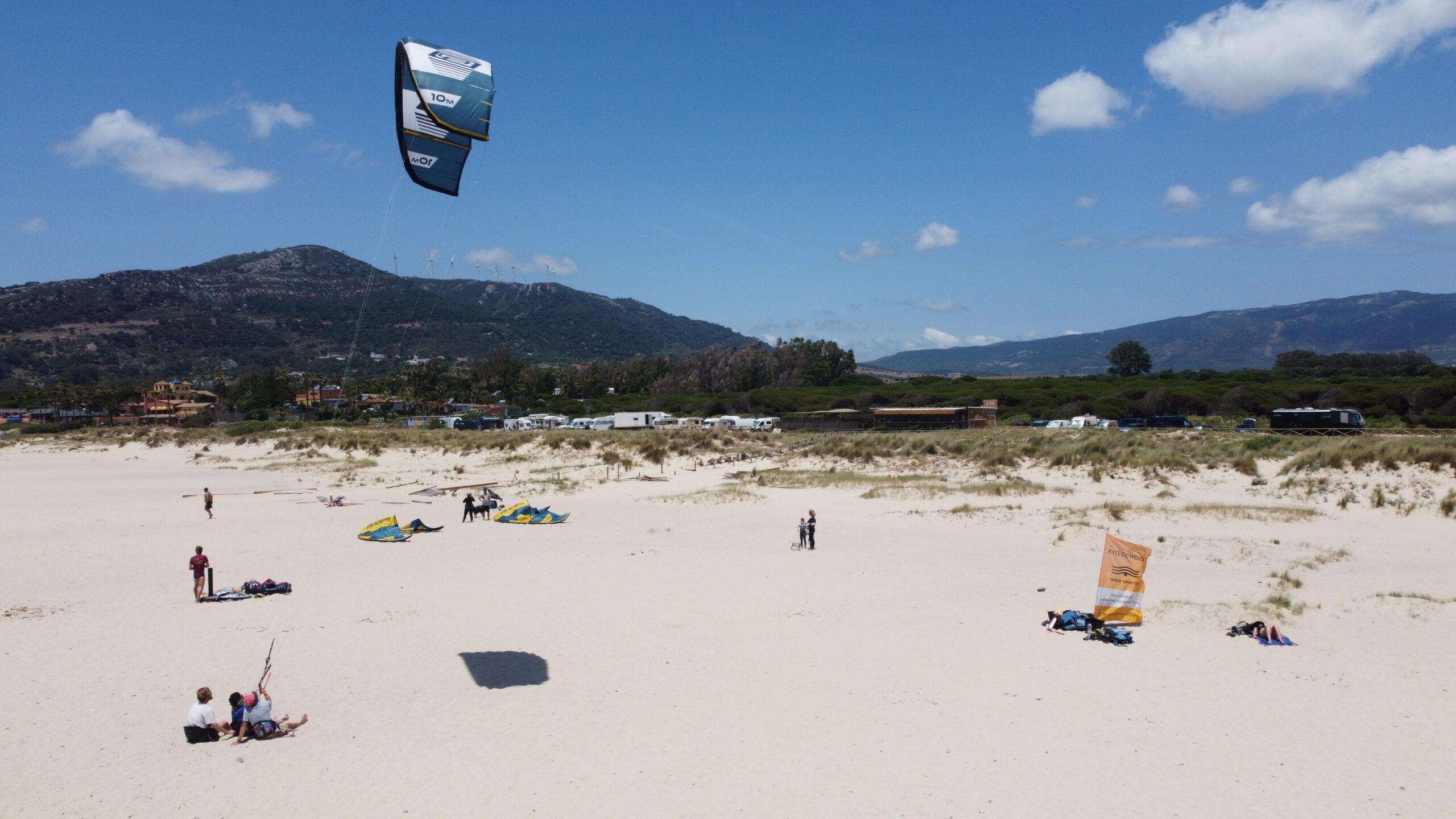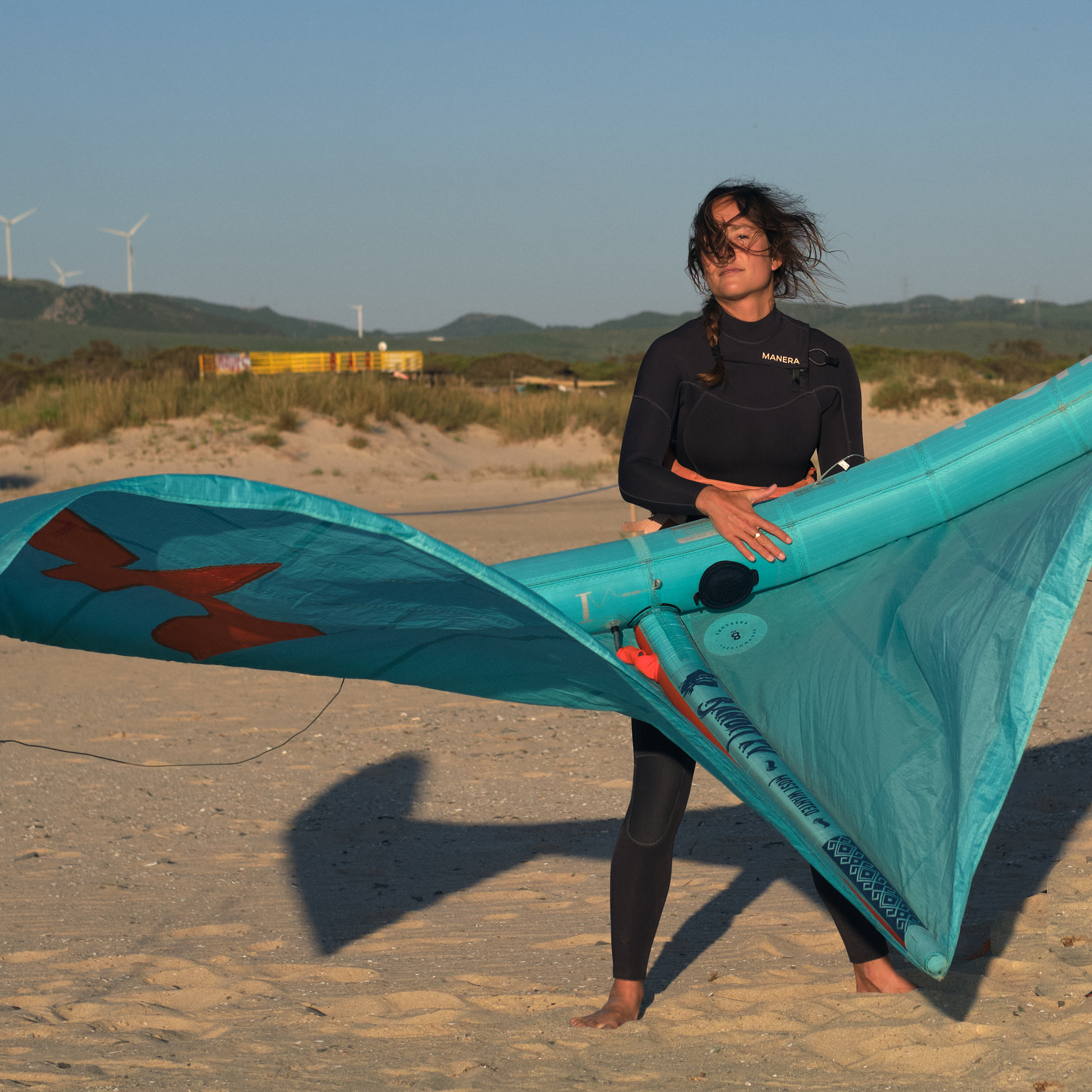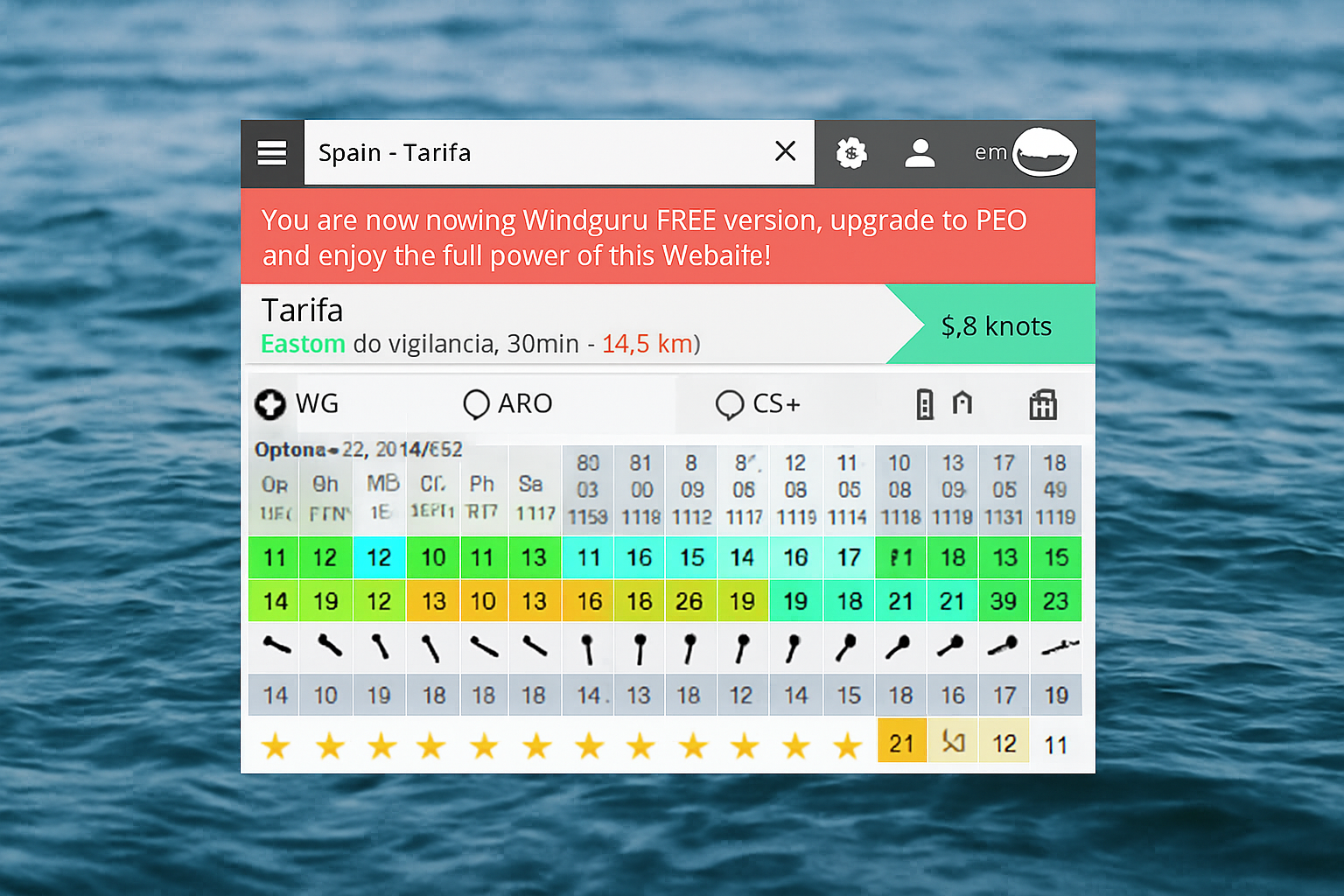“Huh? Short lines? That doesn’t make any sense! That’s not real kitesurfing!”
We hear this sentence all the time from people who already know a bit about kiting – and honestly? I used to think exactly the same.
After my first few years as a kite instructor, I was convinced:
You only learn kitesurfing with long lines!
I didn’t want to believe otherwise, even though during our IKO instructor training we were actually taught to use short lines – they really drilled it into us… but I ignored it anyway.
Fast forward through thousands of teaching hours and now 15 years of experience, I can say with 100% certainty:
Switching to short lines was a total game-changer!
Why? Let me explain.
How does our beginner course with short lines work?
We adjust the line length step by step, based on each student’s progress.
That means maximum control, safety, and a relaxed learning experience.
Here’s what it looks like:
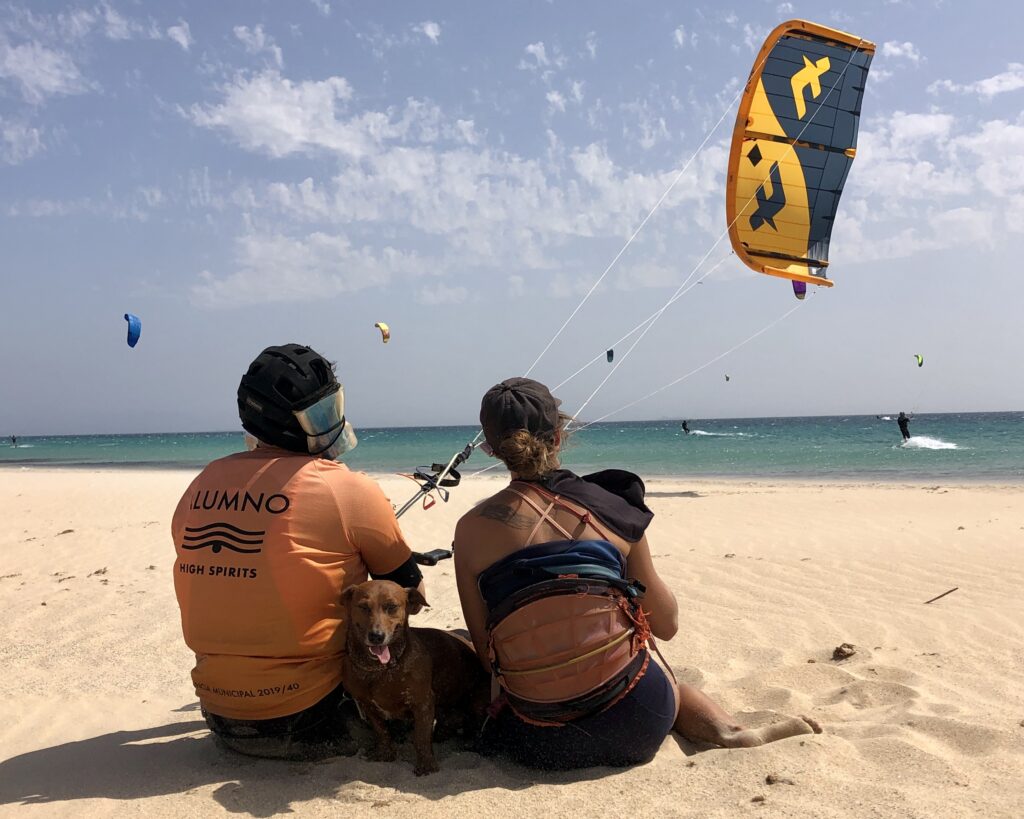
✅ Day 1 – Theory & first kite control on the beach
Depending on the wind strength, we start with 5m or 10m lines.
Strong wind or nervous student? → 5m lines for maximum control.
Light, steady wind & confident student? → 10m lines.
✅ Water practice – improving kite control
As soon as the student has mastered the basics on land, we move into the water.
We usually stick with 10m lines until the following maneuvers are solid:
• Powerstrokes
• One-handed flying (Upwind Body Drag)
• Relaunch
• Safely exiting the water with the kite in the air
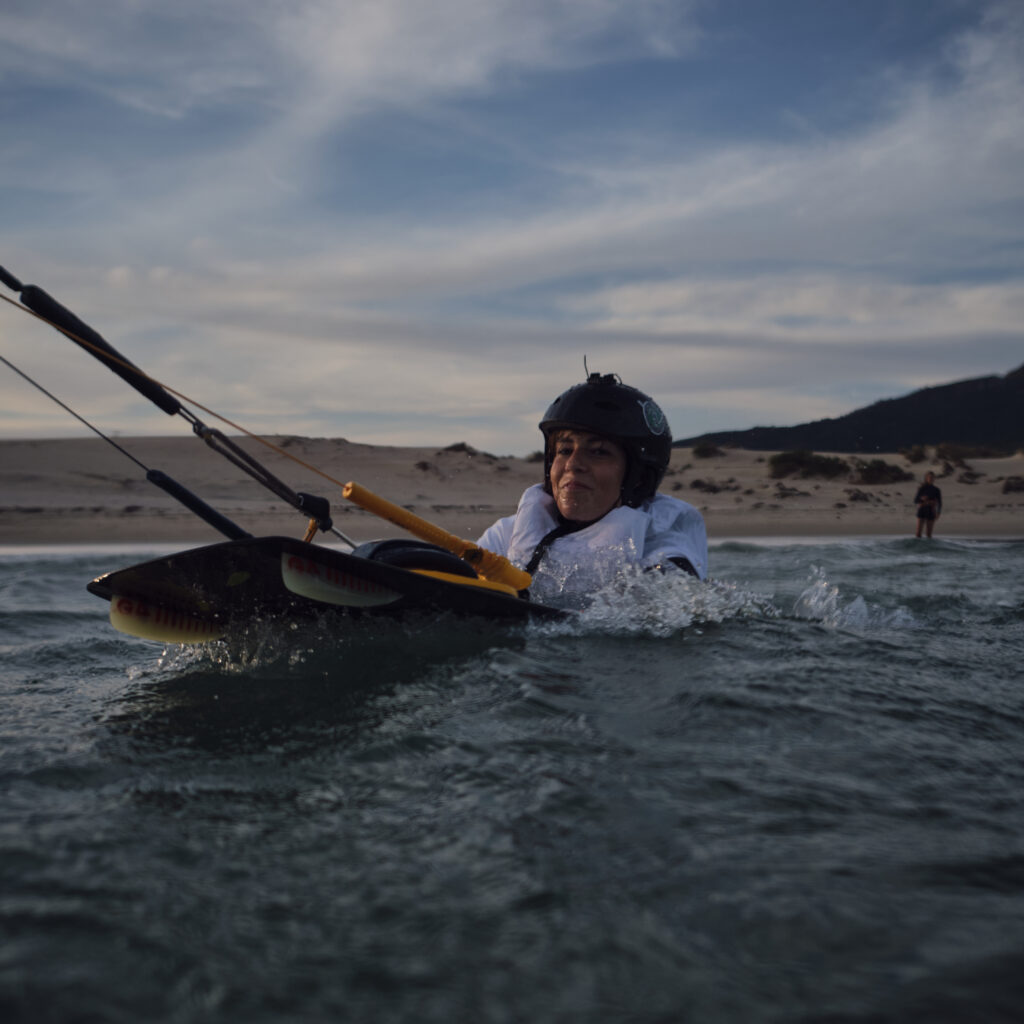
✅ First attempts with the board
When the student can confidently control the kite and put on the board, it’s time for the first powerstrokes with the board on their feet.
Now we need more power, so we extend the lines to 15m.
✅ Final steps to standard line length
Once the student has full control over the kite, we gradually increase to 18m or 22m lines (the standard length).
Every student learns at a different pace – so we adjust individually.
Why are short lines so important?
The benefits are huge – for students and instructors alike:
✅ More control, less risk
Short lines generate less power, which helps beginners feel safer.
Mistakes are part of learning, but with long lines, small errors can quickly become dangerous.
✅ More forgiving & safer
Most beginners crash the kite a few times at the start – with short lines, it’s no big deal.
The kite doesn’t slam into the water at full speed or drag the student uncontrollably.
👉 This is crucial:
A lot of students quit after the first scary experience, thinking:
“This is way too dangerous!”
But with short lines, learning is way more fun – because mistakes don’t hurt.
And mistakes are how we learn!
✅ No scary kite loops
With 5–10m lines, it’s physically impossible for the kite to loop unintentionally – and that’s a huge safety advantage!
An unwanted kite loop is every student’s and instructor’s nightmare.
Anyone who’s experienced one knows how powerful the pull can be.
With short lines, that simply can’t happen – and that means peace of mind.
✅ Faster & more efficient learning
Students can focus entirely on kite control without being overwhelmed.
Only when the basics are really solid do we add more power by lengthening the lines.
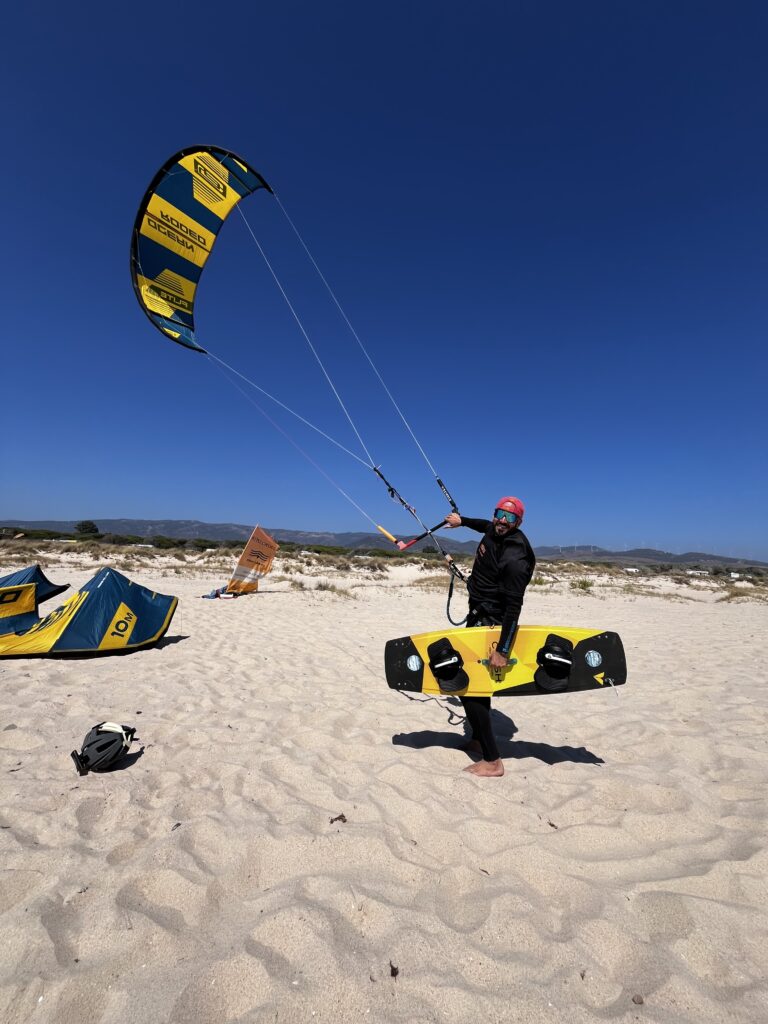
✅ Perfect for spots with limited space
Short lines need less room, which is super useful on crowded beaches or small teaching areas.
Conclusion: Short lines = a better start to kitesurfing
I totally get the skepticism – I had it too!
But experience has shown us:
Students who start on short lines don’t just feel safer and more in control – they learn faster and more effectively in the long run.
And isn’t that exactly what we want?
🎯 Want to know exactly how our kite course works?
Click here and check out our latest blog post for a full breakdown of the course!

